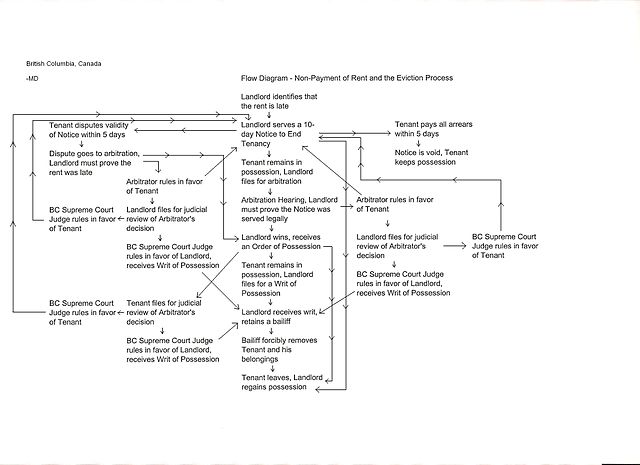Eviction is the removal of a tenant from rental property by the landlord. In some jurisdictions it may also involve the removal of persons from premises that were foreclosed by a mortgagee.
Erik Henningsen's painting Eviction held by the National Gallery of Denmark.1892
RIC and Hussars at an eviction-Ireland 1888
Two men with children, being evicted, stand with their possessions on the sidewalk, circa 1910, on the Lower East Side of New York City.
Flow Diagram of the Eviction Process in British Columbia, Canada
A landlord is the owner of a house, apartment, condominium, land, or real estate which is rented or leased to an individual or business, who is called a tenant. When a juristic person is in this position, the term landlord is used. Other terms include lessor, housing provider, and owner. The term landlady may be used for the female owners. The manager of a pub in the United Kingdom, strictly speaking a licensed victualler, is referred to as the landlord/landlady. In political economy it refers to the owner of natural resources alone from which an economic rent, a form of passive income, is the income received.
Powerful landlord in chariot, Eastern Han 25–220 CE. Hebei, China
David Berry owned much of what is now known as his namesake town of Berry.






